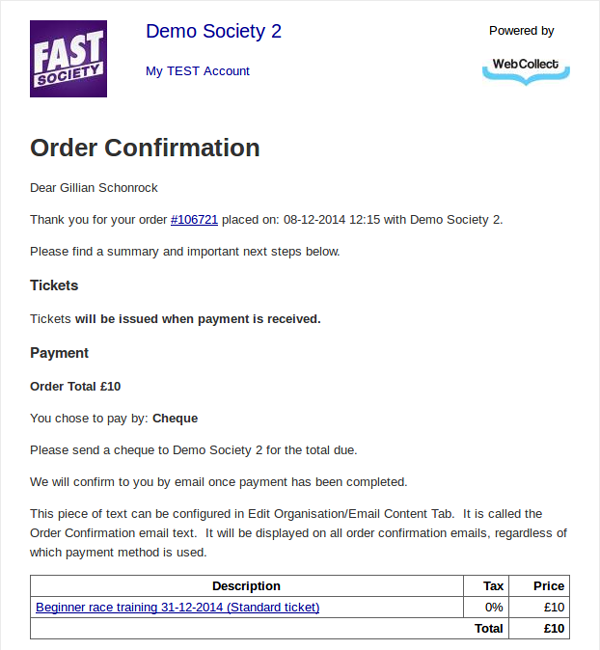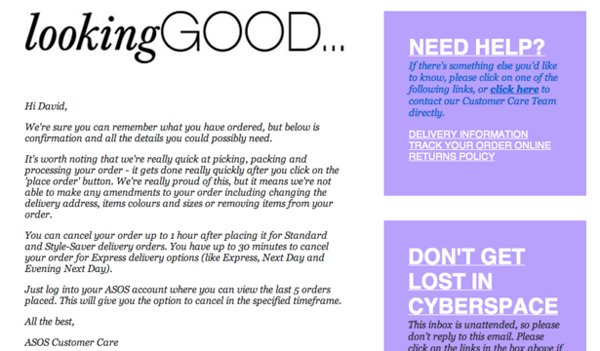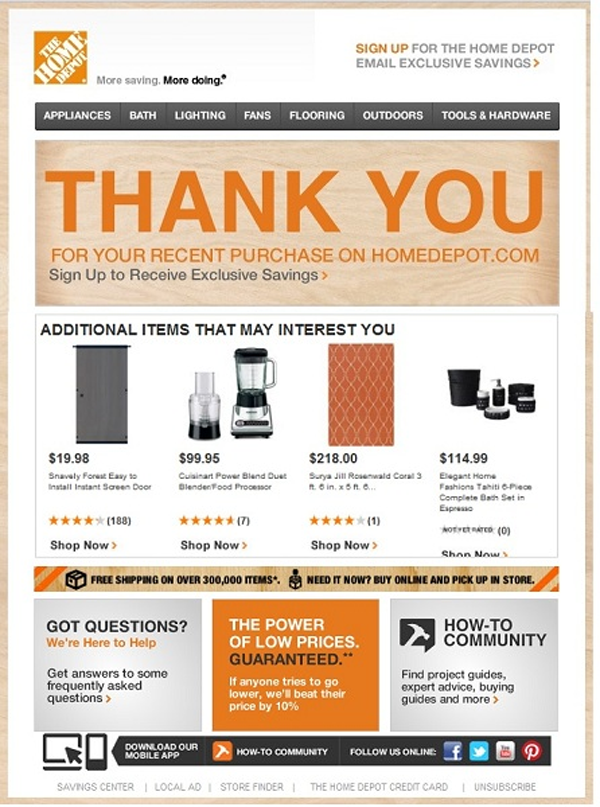Far too often the potential of Transaction mails is not used in marketing, although the opening rates are extremely high and the customer even expects the email. In the first part of this blog post, which is separated into two parts, we would like to clarify the potential of transaction mails and the opportunities that arise for marketing.
Term and relevance
So-called transaction mails are triggered during the use of a system. For example after the order in the online shop, activities in a community or even after using a service portal. Typical emails that fall into this category are the confirmation of registration, the confirmation of an order as well as the confirmation of delivery, and electronic invoices. Normally, the mailings contain more technical and formal information and are for example sent from the shop backend. Too bad, because the relevance of the email is very high for the customer.
Because the transactional mail is a response to a customer’s action, he usually expects to get a confirmation of a successful transaction. Due to the high involvement, transaction mails therefore receive very high attention and are of great relevance for the customer. With opening rates over 80 percent, a transactional mail provides the ideal context for communicating with the customer and makes this form of email extremely exciting for marketing.

Legal framework
It is allowed to send Transaction mails without the explicit consent of the customer since this is service information within the scope of a specific customer relationship. An unsubscribe function is not necessary because the mail belongs to a transaction, is unique and does not contain any advertising. However, enrichment with advertising content depends on the customer’s consent. If the emails have an advertising or sales character, it is necessary to integrate the log-off function. In order to make the process controllable for the customer, self-service portals are helpful for the customer to let him choose about which topics he wants to be informed. Also the frequency in which the information is sent is adaptable. For example, the customer can choose to receive all information only once a week in a summary rather than immediately after the transactions.
Tips for use in marketing
The following part explains the most important tips for the use in marketing on the basis of some practical examples.
- “Be friendly” is the first step
The experience that a customer makes with a company and the service feeling he gets already begins with the text. A main rule – “be friendly”! This is already half the rent.
For example if the company wants to inform the customer that he has to be patient and gets the information he asked for later due to technical problems. Most times the email that is sent to the customer has a very briefly kind of formulation and gives instructions. This is not creating a sense of service and the customer will have a negative feeling. It is better to put the same content in a charming Formulation, that explains to the customer why he has to wait. That shows that customers have a high priority for the company and deserve open communication.

- Use transaction mails for good service
The next step in service communication is the use of simple additional information, which relates to the transaction and the product.
For example, you can inform the customer about the values of the company in addition to the order confirmation. His purchase decision is confirmed when you list the significant advantages and it is also clever to inform him directly about how he can return the product if he is not satisfied. Simple – but an effective approach and clever use for marketing.
As a second example, it is a good idea to give the customer welcome information. Just take a few tips and tricks around the product and explain how it works. This increases the anticipation, again shows advantages and the customer gets the impression that the company is concerned about the usefulness of information for their customers.
- Use transactional mails for further recommendation
The next opportunity for marketing is to use the commitment and the enthusiasm of the customer about the new product for the further recommendation as long as the enthusiasm is fresh. Recommendations or evaluations are simple ways to gain new contacts from the transaction.
- Obtaining opt-ins
The transactional mail always offers the space to draw attention to the newsletter and thus to get further opt-ins, especially from customers who buy regularly but have not requested further information so far. At this point, observing the legal framework is important, since the inclusion of the reference to the newsletter is a promotional measure. Therefore, the focus and the center of the message should be on the service aspect.
- Cross- and Upsells
Of course, it is possible to send cross- and up-sell advertising directly, but only if you have an opt-in from the customer. In the transaction mail, it is useful to place discreet messages that fit the context. For example in the form of recommendations which fit the purchased product or offers for an additional package in the example below. Quickly earned money for the company and easy for the customer, because he has to make a single click to purchase additional features. If there is no opt-in from the customer, all of this is difficult because, as mentioned above, promotional content in transaction mails is not possible from the legal framework.

- Start for Marketing Automation
With the implementation of appropriate solutions, it is easy to create exciting communication routes from simple transaction emails. Therefore, they are often an important trigger for a long-term customer dialogue.
In an example, the data of the purchase and the order confirmation are the starting point for realizing complex scenarios with digital platforms. In the course of time, many mails will derive from this. For example: “Look forward to your package soon,” or “Thank you for your purchase”. When the customer is in the shop for the first time, you can welcome him in the community. Another benefit for the communication is to inform him about the philosophy that is behind the company and how the processes are running. Towards the end of the process, follow-up emails are useful. This makes it quite easy to implement a completely different way of communicating with the customer than simply sending technical emails from the system.
In the second part of the blog post “Successful transactional emails – what matters?” You will learn which criteria is important to make the transaction mail successful.